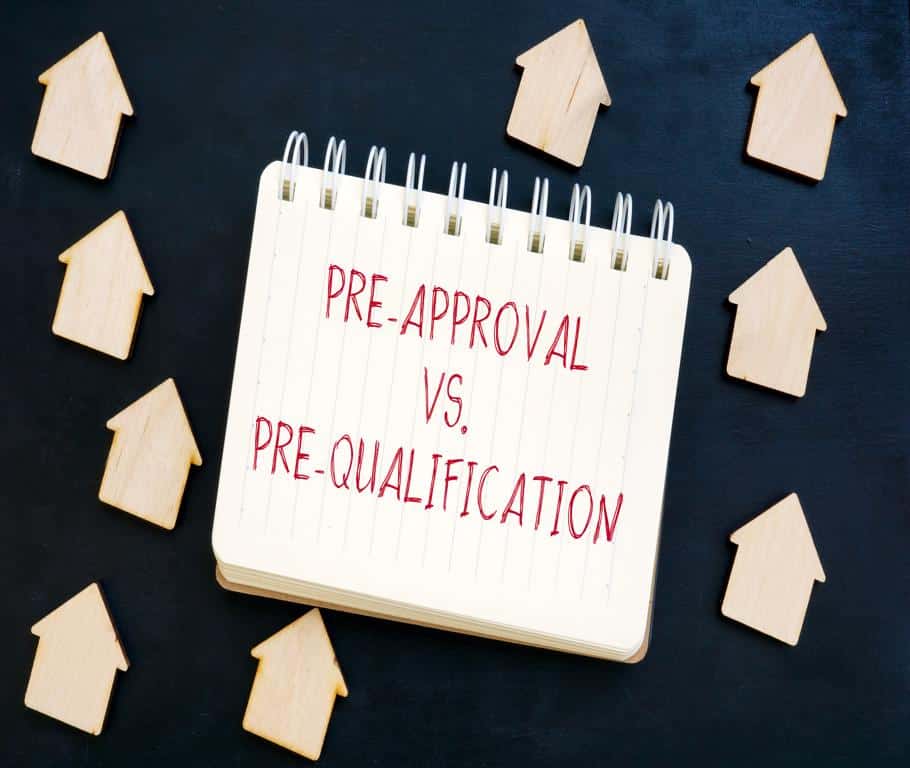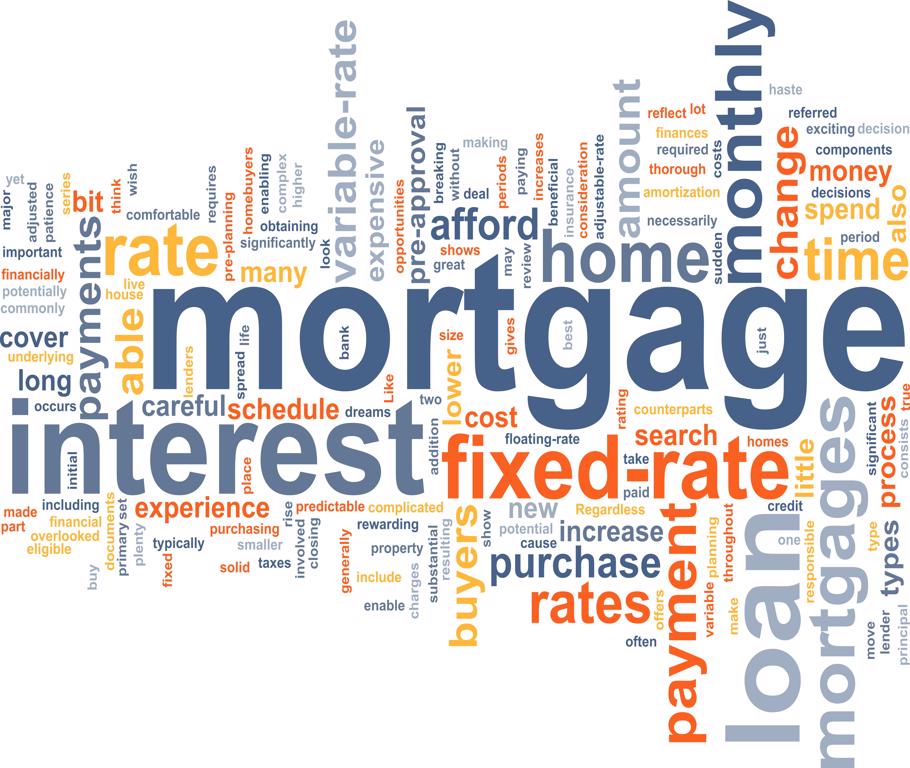There’s no doubt the housing market is on fire right now. In April of 2021, there were 608, 883 homes sold. Even more surprising was that 48.9% sold above the asking price.
If you think you’re ready to buy a home, you need to be ready to go too. In fact, the homes selling now are on the market for only 19 days before selling, an average of 16 days less than a year ago.
From saving for a down payment, monthly budgets, and shopping for the best neighborhoods and schools, buying a house gives you plenty to think about. One thing you can’t ignore when you’re ready to buy is getting pre-approved for a mortgage.
Getting pre-approved for a mortgage tells the sellers you are a serious buyer and ready to take the huge leap into homeownership. Read on to learn everything you need to know about the pre-approval process, so you’re ready to make your home purchase.

Instant. Simple. Smart We Make Insurance Easy
Instant. Simple. Smart
We Make Insurance Easy
Find Out How Much You Can Save Today

Take the first step towards peace of mind with LoPriore’s team. Experience tailored insurance solutions that fit your lifestyle and budget. Get your free, no-obligation quote today and see the difference expertise makes!
What Does Getting a Pre-Approval Mean?
When Christmas rolls around, you know how much money you can afford to go buy your kid’s toys. When you head off on vacation, you have a plan for what it’s going to cost you for the hotels, entertainment, and food.
A pre-approval from the mortgage company works much the same way. When you get a pre-approval from the mortgage lender, it’s them telling you how much they are willing to loan to you, assuming you meet all of the borrowing criteria.
When a mortgage lender will offer a pre-approval, they will tell you an amount they believe you can afford for buying a house. If you get pre-approved for $300,000, for example, the mortgage lender believes you can buy a house for up to that amount.
A pre-approval is almost necessary for this competitive market because it tells a seller there’s a good indication you can actually secure financing for the house you make an offer on. You should know that just because you get pre-approved, it doesn’t mean you’re automatically approved for a loan, but it’s a solid indication you will be.
The mortgage lender will want to look at the actual property and specifics before giving approval. With many listed homes getting multiple offers, your offer carries more weight with a pre-approval letter. More on this later as soon as they hit the market
Because the market is so competitive too, many real estate agents might be reluctant to work with someone who hasn’t been pre-approved.
What’s the Difference Between Pre-Approval and Prequalified?

As you begin this process, you’ll hear a variety of terms that sound remarkably similar. So, what’s the difference between pre-approval and prequalified for a mortgage?
When you approach a lender, they could do what’s called a prequalification. Imagine this being a quick look kind of qualification. A hard inquiry into your credit isn’t made for this. Instead, the lender will ask some basic questions like:
- Household income
- Monthly expenses
- Amount of debt
This helps the lender to get a picture of how much you could potentially afford in a mortgage and what type of mortgage might work best. Based on what information they get from you, they might prequalify you for a certain amount in a mortgage. It’s not a guarantee you could get a mortgage with them. It’s really more of an indicator.
The pre-approval then is the next step. At this stage, the underwriting team from the lender gets involved. You would need to make a mortgage application (more on this later) and meet with a loan officer. Often in pre-qualification, you don’t even need to meet with the lender in person.
Then the lender will check your credit score by running a credit check. They might also ask for more direct documentation, including:
- Debt-to-income ratio
- Employment history
- Income
- Assets and liabilities
- Tax returns
Based on what the lender sees in you, they offer pre-approval. This, again, tells the sellers you’re a serious buyer who is ready to go.
What’s the Difference Between Pre-Approved and Approved?
Once you’re pre-approved, you still have to go through the final step to be actually approved. Even though the lender has pre-approved you, they still want specifics before their final approval.
The pre-approval requires borrowers to start the mortgage application process, yet you need to complete the application process to get the final approval. You can’t actually do this until you’ve found a specific house and have a purchase agreement.
The mortgage lender isn’t going to grant approval without knowing about the property you’re buying. They want to be assured it’s worth what you’re borrowing and have specific information about it.
At this point, they are likely to want more specifics from you too.
The Mortgage Application Process
When you go for pre-approval, you’ll start the application process. A mortgage application is very detailed and requires you to provide documentation along with the application. Many who begin the homebuying process do some mortgage shopping and will apply with multiple lenders.
When a mortgage lender does a credit check, it counts as a hard check for your credit score. This can often have a negative impact on your score. If you apply with multiple lenders, though, don’t worry each check will count against you. They will count cumulatively as one check.
Let’s take a closer look at the parts of a mortgage application.
Mortgage Type and Terms
This first part of the application asks you to identify what type of mortgage you hope to get. We’ll go into more detail on the types of mortgages shortly. You might choose conventional, FHA, USDA, or VA loans. When you do prequalification, your lender will be able to help with this.
Then the lender will want some specifics included about:
- Loan amount
- Interest rate
- Term of the loan
- Type of amortization
This is part of the reason you’ll need a specific property when you finalized the application.
Property Information
Here you will need to identify the address of what you plan to buy. The lender will want to know if you need the loan because you plan to purchase the property or you hope to refinance or do a construction loan.
The lender will want you to identify if this will be your primary residence. If not, there will be a second home or vacation home, investment property, and whose name will go on the title.
Borrower Information
This section provides all the identifying information about you. It will include:
- Full legal name
- Date of birth
- Social Security number
- Education information
- Marital status
- Number of dependents
- Address history
This provides the lender with information to run the credit history and check employment and address history too.
Employment Information
Here the lender will want information about who intends to borrow the money related to employment. They will want information about your employer and contact information on the employer. If you haven’t been with your employer for several years, they will also want information about your previous employer.
The lender will want to get an income verification from your employer, so you will likely sign a release so they can talk with your employer.
If you and a spouse or partner are buying together, you will both need to provide this information.
Monthly Income and Expenses Information
Here the lender will want to know about your income and monthly bills. They will need to know how much income you have coming in each month. Income sources might include salary, bonuses, commissions, overtime pay, and other sources of income such as interest payments or rental income.
You would need to provide all income sources for both you and anyone else, like a spouse, who is part of the mortgage.
Then it would be best if you listed your debts and bills. The mortgage company wants a picture of your monthly expenses compared to your income. They want to be sure you can afford the mortgage you are seeking.
Assets and Liability Information
The assets and liability section goes a little deeper into your financial picture.
The lender will want a good picture of assets beyond your monthly income. This should include things like investment accounts, retirement accounts, and your checking and savings account.
The liabilities will include anyone to whom you owe money, including credit cards and car loans. You will also need to provide information on any alimony or child support you pay too.
Details of Transaction
This part of the application outlines the details of the transaction you intend to make with your mortgage. It will include:
- Purchase price
- Loan amount
- Value of anticipated improvements/repairs
- Estimated closing costs
- Buyer-paid discounts
- Mortgage insurance if needed
The good news for the applicant is that the mortgage lender will very often complete most of this section of the application for you.
Declarations
Your mortgage lender doesn’t want any financial surprises as they process the loan, nor does the seller. This section of the application is there for you to provide any additional financial information you should.
The declaration section of the application will ask you to disclose any other financial hardships the mortgage lender should be aware of. These might include:
- Judgments
- Liens
- Past bankruptcies
- Past foreclosures
- Pending lawsuits
- Delinquent debts
Remember, it won’t look good for you not to tell the mortgage company something, only to have them find it out later.
The other declarations require you to disclose citizenship, and if you intend to use the home, you’re purchasing as a primary residence.
Acknowledgment and Agreement
Like any kind of official document, the application must be accurate and honest. In this section, the mortgage lender asks you to state that the information you’ve provided in the application is accurate to the best of your knowledge.
You will also be giving the mortgage lender permission to verify the information you’ve provided in the application. You should know they do verify information, so you want to be honest and forthright.
Government Monitoring
This section is included by regulation for the federal government oversight. They are regulations related to lending practices.
The government wants to be assured that lenders are not being discriminatory in their lending. You’ll be asked if you’re willing to release information from your application to show they are compliant. This would include information on your ethnicity, race, and sex.
Factors for Pre-Approval
As the mortgage lender looks over your application, you might wonder what will be most important to them. What will make them decide to give you a pre-approval and then eventually an approval for a mortgage?
Getting a pr-approval for your application and eventually, an optimal mortgage rate is based on several factors in your application.
Credit Score and Credit History
One of the biggest factors in your application to get towards pre-approval is your credit score and credit history. The lender will look closely at your score and what’s in your credit history that helps to make that score. If you know your credit score is not optimal, you might wait a while before applying for a mortgage pre-approval and work to improve your credit score.
Debt-to-Income Ratio
Another consideration is your debt-to-income ratio. This basically compares how much debt you already have in comparison to the amount of income you have each month.
They factor debt-to-income ratio using percentages. Ideally, they don’t want the amount of debt you hold to be greater than 36% of your income. You’d likely be disqualified for pre-approval if you reached about a debt-to-income ratio of 43% or higher. You want to calculate your debt and do a debt-to-income analysis before submitting a mortgage application.
Employment and Income
Lenders will also look at your employment history. If you haven’t held the same job for a while, they will consider previous employment too. They want to believe you can stay employed so you can actually make those mortgage payments. Part of this consideration will also be the income you generate from your employment.
Loan-to-Value Ratio
The final consideration can be tricky in a competitive housing market where buyers often need to bid over the asking price. The lender will consider the value of the property and the amount you seek to borrow. They all have loan-to-value (LTV) ratio limits.
The standard for a conventional mortgage used to be a 20% down payment. This established a fair loan-to-value ratio that mortgage companies could approve. If you’re putting a smaller down payment down, this may become an issue.
The other issue with loan-to-ratio limits is how much you need to bid to get the house. What happens if the house doesn’t appraise at the amount you’ve offered? This is where the loan-to-ratio limits come into play. It will require you, as the borrower, to put more money down.
There are not necessarily common industry standards for this, and each lender establishes its own limits.
Deciding When to Seek Pre-Approval
There is some guessing involved with when the right time is to seek pre-approval. You definitely want to have the pre-approval in place before you start looking at houses, especially in a competitive market.
You don’t want to be in a position where you find the perfect house and want to bid on it but don’t yet have the pre-approval in place.
The process can take a few days or up to several weeks. It would be best if you assumed in a busy housing market that the process is likely to take longer.
On the other hand, you don’t want to seek a pre-approval if you’re not really ready to start looking for a home. The pre-approvals are usually in effect for 90 days. If you do it too soon, it could expire, and you’d need to start the process again.
The Decision on Pre-Approval
Once you submit your application to the mortgage lender, there are a few results you can get.
You could get approved. Congratulations, you’re ready to start shopping for a home.
You could also get declined. If you’re declined, the lender will provide the reason and often resources to help you going forward. It might mean you need to lower the amount of debt you have or improve your overall credit score.
You might also get approval with some conditions attached. Often if this is the case, the lender will say we are willing to offer a pre-approval, assuming you do the following things. This might include paying down some debt, for example.
If you do get the pre-approval, the lender will provide what’s called the pre-approval letter. It sounds like a letter, but it’s actually a legal document that states you have the means and the approval to get financing.
Often pre-approval letters will be on official lender letterhead and will include purchase price, loan program, interest rate, loan amount, down payment amount, expiration date, and the property address, if one is available.
Types of Mortgages

As you complete a mortgage application and seek pre-approval, one thing you’ll want to figure out is what type of mortgage you want or need. Often a good lender can look at your circumstances and financial picture and help you find the right type of mortgage for you.
Since buying a home without a mortgage isn’t an option for most people, it’s necessary to find one that will work for you. Let’s take a closer look at the types of mortgages you might consider for your loan.
Conventional Mortgage
A conventional mortgage is the most traditional type of mortgage. It’s not guaranteed by the federal government, which means lenders will be more stringent for approval. You’ll also likely need a larger down payment for approval. It’s not uncommon for a conventional mortgage to need a 20% down payment for approval.
There are both conforming and nonconforming conventional mortgages. A conventional mortgage that is conforming falls between guidelines put in place by the Federal Housing Finance Agency. A nonconforming mortgage doesn’t fall within those guidelines.
One type of nonconforming conventional mortgage is a jumbo loan. A jumbo loan is often needed in housing markets where the cost of a house is very high and exceeds the Federal Housing Finance Agency guidelines.
Government-Insured Mortgages
There are several different types of government-insured mortgages. This means the lender is getting insurance from the government that the lender will still get their money if you should default on your loan. Government-insured loans include:
- FHA loans
- USDA loans
- VA loans
Often the criteria for qualifying is less stringent than a conventional mortgage. One nice feature of these types of loans is that they allow borrowers to get a lower down payment mortgage.
Adjustable vs Fixed-Rate Mortgages
Another mortgage type designation is connected to the mortgage rate you get with the loan.
An adjustable loan means the mortgage rate might adjust during the life of the loan. Often an adjustable-rate mortgage will remain locked for a number of years, and then it can adjust. You might seek this type of loan while the rates are high in the hopes they will be lower once they adjust.
This type of mortgage is risky because you can’t completely predict what your payments will be throughout the life of the loan. It’s a risk if the rate adjusts up and your payments become too much to afford.
A fixed-rate mortgage means the rate remains locked during the entire life of the loan, and your payment will remain consistent.
Once You Find a Home, Get Your It Protected With the Right Insurance Coverage
Of course, the process of buying a home can be daunting. Going through the process of getting a mortgage can feel like a whole lot of work.
Once you have found a home, though, there are some other considerations. One important thing is the need to make sure you have homeowners insurance to protect your investment.
Get Pre-Approved for a Mortgage and Get Ready to Move Into Your New Home
The idea of homeownership is part of the American dream. Getting there often requires some hard work and financial diligence. Getting pre-approved for a mortgage takes you one step closer to becoming a homeowner and making that dream a reality.
If you’re ready to buy a home, you probably want to factor in future expenses like home insurance. We can help you evaluate all of your insurance needs, whether for home, autos, or other property. Contact us today to set up a time to evaluate all of your insurance coverage.
Contact LoPriore Insurance Agency Today
To Get A Free Insurance Quote
We Make Insurance Easy For You!
Work with a local experienced insurance agent and save you time and money!
Get Tailored Protection Today
Contact Us for Your Insurance Quote
Questions or need further guidance? Contact our expert team today! We’re here to help you navigate insurance options and find the right coverage for your unique needs. Reach out to us now and safeguard what matters most to you.
